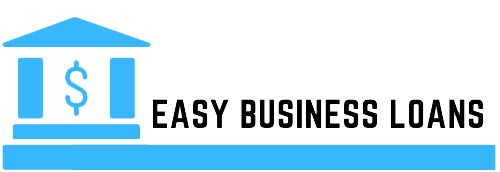Equipment lease benefits are equal to purchasing new. Buying new equipment to fit your needs may be the default decision but it might not be the best one. Most new equipment purchases come with their own budget busting headaches that include:
- If your competition is upgrading rapidly you could be stuck.
- When equipment operates in harsh environments and the warranty has expired then costs can rise to exceed profit.
- Obsolescence, used or older equipment may seem like you’re saving money, but the new equipment can be much more productive allowing cost to drop and profit to rise.
- When your equipment is critical for operations and it goes down for repairs you could lose the contract, or face legal jeopardy for not meeting the timeline.
A lease option is always worth considering as it can elevate the budget busting headaches and offer advantages that purchasing can not.
What is An Equipment Lease
There are a number of types of equipment leases, but as a rule, a lease can be thought of as a way to finance equipment without getting a loan. This is primarily treated differently on the balance sheet and will not affect the debt equity ratio.
A big advantage to the lease is the ability to write off the entire lease payment as an expense, as opposed to a loan where only the interest can be written off.
There are different types of equipment leases and they are not all treated the same. And it is important to understand each type and how they will affect the balance sheet and your bottom line.
What Are The Types of Equipment Leases
Equipment leases are grouped into the following categories:
The Operating Lease
This type of lease is usually selected when you only need the equipment for a short period of time and the lease may need to be canceled before the lease term expires. Often this type of lease is used to fill a gap period between equipment sale and purchase.
Or equipment is down for maintenance. The lessor always retains ownership of the equipment. Using this type of lease all lease payments can be written off as expenses.
The Capital Lease
If you need equipment that is expensive, will be held over a long period, and at the end of the lease period you may want to acquire the equipment then the capital lease is usually the best option.
With this type of lease the lessee will be responsible for:
- Maintenance
- Insurance
- Taxes
With a capital lease the leased equipment is recorded in the balance sheet as an asset and liability during the lease period.
Hybrid Equipment Lease
This type of lease combines the features of the capital and operating leases. When you are working with the right type of leasing companies there are ways they can structure a lease that can meet the needs of the organization and build in more flexibility.
These include:
- tax and financial advantages,
- lease finance through issuing debt.
If the capital or operating lease do not fit your needs then it is worth tracking down a leasing company that can offer hybrid lease options.
How Does Equipment Lease Financing Work
Equipment lease financing and loans are similar in how they are paid for. With a lease the lender is the one that actually owns the equipment and then rents it back to you for a flat monthly payment that is usually less than what you would pay for a loan, because the lender retains ownership at the end of the period. You will find that most leases come at a flat monthly rate that has a fixed interest rate.
Equipment lease formula
Using current accounting lease standards, the lessee calculates the present value of any future lease payments to determine the obligation to be recorded on the balance sheet.
The formula for calculating equipment lease payments is:
Payment = Present Value – (Future Value / ( ( 1 + i ) ^n) / [ 1- (1 / (1 +i ) ^ n ) ] / i
In this equation, “i” represent the interest rate as a monthly decimal. Convert the interest rate to a monthly decimal.
Here is an online lease calculator
What Is The Equipment Lease Agreement
The agreement where one party(lessor) gives another party(lessee) the right to have and use(but not own) an identified piece of equipment for a certain period of time.
This arrangement is made in exchange for the lessee paying the agreed amount to the lessor over the specified period of time. Depending on the lease the lessor may or may not retain ownership of the property leased.
Equipment Lease Agreement With Option to Purchase
When there is an option to purchase the leased equipment at the end of the period this is stipulated in the lease agreement. This is different from an agreement called a lease purchase.
Under this option the lessor has agreed and has the responsibility to purchase the equipment at the end of the period. When using the option to purchase the lessor has the option to purchase but not the obligation to purchase. Often there are clauses in both types that allow extending the lease.
Equipment lease buyout
When considering the purchase option you should look for the Fair Market Value Purchase option.
Using this option the purchase price will not be provided in advance, but it does provide the right without the obligation to purchase the asset at the end of the lease period for a price that represents the fair market value of the assets current worth.
Equipment Lease Back
This type of lease is used by companies looking to raise working capital quickly or retire debt that may have high interest rates. In this case a business that owns equipment and will sell this equipment to an investor. The investor agrees to lease the equipment back to the seller.
This type of lease back can provide options to businesses that are focused on increasing liquidity, improving the balance sheet and boosting cash flow. It can help to structure financials to gain capital for future growth.
Equipment lease interest rates
Lease rates have remained within a range of 6 to 30%, the average being around 6-16%. If the agreement your looking at exceeds 16% it is best to continue looking for a leasing company that can provide more reasonable terms.
There are reasons that the interest rate will go up. These reasons often relate to the term of the loan, and the credit of the business. Your lease term should never exceed the useful life of the equipment.
When considering an equipment acquisition make sure that you consider the types of loans, and if the lease option can provide improved flexibility, cash flow and better availability.
Read more about types of financing.


Comments